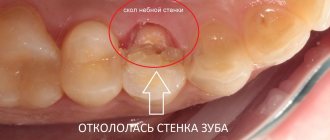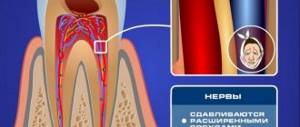A gummy smile is characterized by a high position of the upper lip when smiling, when the gums above the upper teeth are noticeably exposed. Sometimes, when denoting a gummy smile, they speak of high gum level or a high smile. The condition and visibility of the gums plays a very important role in the perception of a person’s appearance. Ideally, the gums should not show much when smiling and should be in harmony with the cutting edge of the teeth. When aesthetically analyzing the appearance of the gums when smiling, it is necessary to pay attention to the degree of exposure of the gums above the teeth.
The normal position of the gums above the upper teeth when smiling:
From a physiological point of view, there is nothing wrong with a high smile with wide exposure of the gums! It just so happens all over the world that a smile without visualization of the gums or with very little visualization is considered more beautiful and harmonious.
Where does a gummy smile come from? A gummy smile is an anatomical structure. This is not a pathology or a deviation from the norm. It's just an anatomical feature, such as long fingers or short legs. With this physiology, the gums are exposed not only when a person smiles widely, but even during a conversation or sincere expression of emotions. Therefore, only the person who has such a feature should decide how to treat it: as a highlight or a defect that can be corrected.
The reasons for the change may be purely aesthetic. For example, when a man or woman, forming their personal image and working to improve their personality, come to the conclusion that a gummy smile does not look intelligent, sexy and charming enough, it simplifies the image, making the face rougher. It's always a personal feeling. The decision to correct a gummy smile must be made calmly, carefully, and in no case against the backdrop of emotions! And it is imperative to consult with a group of specialists - masters on various methods of correction. Why with a group of specialists? Yes, because there are several correction methods. To understand what is best for you, sometimes you need to listen to two or more specialists.
Symptoms of a gummy smile – is there a problem?
It is worth noting that a gummy smile in itself is not a pathology , it does not in any way affect the health of the teeth, and does not have a negative impact on the process of chewing and digestion.
But many owners of this feature, most of them women, want to get rid of it, make their face more harmonious, because with such visualization it is sometimes visible, for example, that the teeth are dentures, the color of the gums has changed to bluish, yellowish or purple, the gums are affected by periodontal disease. In this case, we are talking about smile aesthetics , which can be achieved by several types of correction.
Video: Gummy Smile. Correction methods
A person’s gummy smile is immediately noticeable - not only the upper teeth are exposed, but also most of the gums, and in some cases the demarcation line between the gum and lip is visible, as well as the place where the upper frenulum is attached to the gum.
A high smile is indicated by the degree of gum exposure. A relative norm is a smile in which the upper lip remains on the upper line of the teeth - or no more than 2 mm above it.
Dentistry
There are still some options that your doctor may suggest if you experience a deficiency such as a gummy smile. Correction can be carried out using frenuloplasty, that is, excision of the frenulum of the upper lip. Another option is correction of the gingival margin. In the latter case, using a laser, the doctor removes excess tissue and forms a new contour. This method can also be combined with prosthetics - the use of veneers and crowns, if the problem is also the unsightly shape of the teeth. This correction of a gummy smile does not require additional supportive procedures and has a lifelong effect.
If the problem is a malocclusion, an orthodontist will help. Fortunately, even quite serious problems can be corrected with the help of braces and braces. Of course, this is more effective in adolescence, but it works for adults too. The disadvantage of this method is that not everyone wants to wear braces on their teeth for a long time, and they are also difficult to care for. But the beauty is probably worth it.
Reasons for the formation of a high gummy smile
In the vast majority of cases, high gums when smiling are the result of individual developmental characteristics of the maxillofacial region of a person, which are formed in utero.
There are a number of other reasons when a person develops a gummy, or “horse” smile:
- Abnormal growth of the maxillofacial apparatus in infancy and childhood under the influence of various negative factors.
- Formation of malocclusion in a child.
- Irregular growth of teeth, their severe curvature and protrusion.
- Very short and thin upper lip.
- Shortening of the upper frenulum that was not corrected in time.
- Disproportionately small incisors on the upper jaw.
- Greater mobility of the upper lip.
- Spastic conditions in this area.
Causes
A horsey, or gummy, smile can be present due to various factors. Firstly, this may simply be a structural feature of the upper jaw or an anomaly of the entire facial skeleton. In this case, there is a lengthening of the entire middle part of the face and a special arrangement of the teeth. Secondly, there is the concept of hyperplasia, that is, the growth of gums. Thirdly, the cause of the deficiency may simply be a shortened upper lip or its hypermobility due to increased activity of the orbicularis oris muscle. Finally, another cause may be an incorrect bite.
At the same time, a gummy smile of varying degrees of severity is observed in approximately 15% of people around the world, including very well-known ones.
Gingivectomy is a dental or surgical method for correcting high gums.
The gingivectomy method is indicated for conditions where there is too much gum above the upper teeth. As a result, it covers a very large part of the teeth, as if hanging over them, which forms a visual gummy smile.
Types of osteomucogingival surgeries in dentistry
It must be borne in mind that the results of this method are irreversible, so surgical correction is prescribed in the most extreme cases with the above-described features, and this happens infrequently.
Video: Gingivectomy - treatment of a gummy smile
The operating method is the most difficult. It is associated with the removal of gum tissue, which invariably has all the consequences of surgical intervention - bleeding of the gums, scarring, possible infection, asymmetry. The development of laser surgery helps to minimize the above-described consequences in operative dentistry, but it is still necessary to keep them in mind, paying due attention to preventive measures.
Removing gum tissue can lead to another consequence that has aesthetic and dental significance - excessive exposure of teeth. This will visually lengthen the teeth and partially expose the roots, which will negatively affect subsequent aesthetics. Therefore, further orthodontic correction with the use of dental crowns and onlays is required.
In order to get the most successful results, the dentist will make a decision not alone, but with a council of specialists, which should include a specialist in aesthetic dentistry.
A decision is made collectively about the need for surgery, and the volume of gum tissue that will be removed without negative consequences for aesthetics is determined as accurately as possible.
Postoperative care
Postoperative oral care plays an important role in the treatment and recovery of dental deficiencies. To alleviate the condition during rehabilitation and protect yourself from the development of serious complications, you must follow the following rules:
- Avoid temperature and chemical irritants (hot, sour, spicy).
- Stop drinking alcoholic beverages and tobacco products.
- Carry out antiseptic and anti-inflammatory oral baths daily with a solution of chamomile and miramistin.
- Perform hygiene procedures 2 times a day using a soft toothbrush and medicated paste.
If your health worsens or suspicious discharge from the gum tissue appears, you should immediately consult your doctor.
When purulent exudate forms, the dentist-surgeon removes discharge from the gum pockets using special instruments, after which he prescribes antibacterial therapy.
Correction of a high smile using a cosmetic method using Botox
In case of hypermobility of the upper lip, excessive facial expressions of the patient, when they cause the visualization of the gums when smiling and talking, there is an excellent method for correcting the condition - Botox injections, which relax the active muscles of this area and help reduce their mobility.
Treatment is achieved by administering bolutoxin type A (Botox and Dysport, popular drugs in cosmetology).
Video: Correction of a gummy smile with Botox
Women who receive Botox injections in cosmetology clinics to reduce wrinkles on the face and enlarge lips also note correction of a gummy smile, if present.
This method, unlike the surgical one, is reversible - this is both a minus and a plus at the same time. Up to six months, the effect of the injections wears off, and so does all the correction he achieved. The procedure must be repeated if desired.
It is very important to entrust the injection Botox correction of a gummy smile to an aesthetic dentistry clinic, a specialist with extensive experience and relevant medical knowledge.
Attention! The consequences of incorrect administration of Botox can be asymmetry of the face and lips, with an incorrectly calculated dose - lack of results, or vice versa - a strong degree of immobilization of the perioral area.
Muscle suturing
Another method used to remove a gummy smile is to perform a small operation under local anesthesia. After the anesthesia takes effect, the doctor makes an incision under the upper lip, through which the orbicularis oris muscle is sutured, depriving it of hypermobility, as well as the mucous membrane. This procedure is more serious, but quite effective.
Speech therapy correction of a gummy smile
The method is indicated for insignificant visualization of the gums, or for excessive facial expressions of the patient, hypermobility of the lips.
The correction process is carried out with a speech therapist who teaches a person to correctly pronounce sounds and words, control his speech apparatus while talking or smiling.
Excellent results are achieved by performing certain exercises regularly. In the future, the person simply automatically controls the movement of his lips, stopping the upper lip in the correct position, which allows him to achieve an excellent aesthetic effect without any intervention in the tissue.
The method of speech therapy correction perfectly complements other methods from our list. It is suitable for most people who want to correct a high type of smile.
Keep in mind! But without constant self-control and regular exercise, you may not get results.
Surgical correction of the upper lip and upper frenulum
The surgical method consists of excision of a section of the mucous membrane on the inner surface of the upper lip and further attachment of the muscle fibers of the lip slightly lower than their original state.
If the cause of excessive visualization of the gums - and errors in eating and speaking - is a greatly shortened upper frenulum, which forms a dense cord and does not allow the upper lip to be lowered to the desired level, it is corrected.
As a rule, such an operation on the frenulum is performed in childhood.
After the surgical field has healed, the desired visual effect is achieved.
Orthodontic correction of high smile and dental problems
If a gummy type of smile is the result of improper formation of the dentition, deformation of not only the teeth, but also the bone tissue of the jaws, the help of an orthodontist is required.
This method may include several types of orthodontic correction, depending on the type and degree of pathology, the age of the patient, and the presence of other pathological conditions.
Most often, orthodontic correction consists of straightening the teeth through long-term wearing of braces.
In most cases, this correction method is used in combination with others - for example, surgical or cosmetic.
Maxillofacial Surgery
Some very serious problems cannot be solved except in the operating room. Anomalies in the development of the jaw due to improper breathing and nutrition in infancy can result in adult problems not only of an aesthetic, but also of a medical nature. Fortunately, modern surgery can do almost everything - doctors can shorten the upper jaw, raising the teeth to their correct place. True, such a procedure not only requires longer rehabilitation, but will most likely cost a pretty penny.











